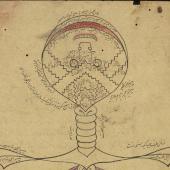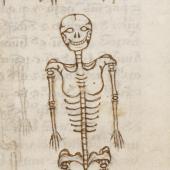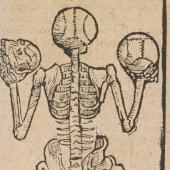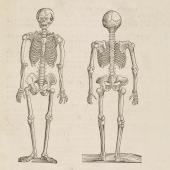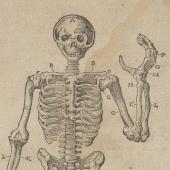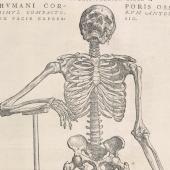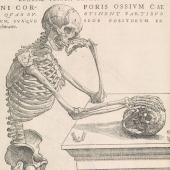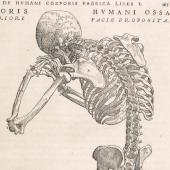The importance of bones
Vivitur ingenio
In 1531, Johannes Guinterius von Andernach (1482-1574), one of Vesalius’s teachers at Paris, translated into Latin for the first time Galen’s On anatomical procedures. At the beginning of this work, Galen, son of an architect, stated that bones and muscles together form the basis of other parts of the body, like a foundation of a building. Furthermore, bones must be learnt before dissecting muscles because bones are like the walls of a house and external features are determined by the shape of the bones. Thus, contrary to earlier tradition in which the bones were discussed last, the Fabrica began with the bones (book 1), followed by the ligaments and muscles (book 2), the veins and arteries (book 3), the nerves (book 4), organs of nutrition (book 5), the heart (book 6), and the brain and organs of the senses (book 7). This was the complete opposite to the traditional order of treating the bones last.
